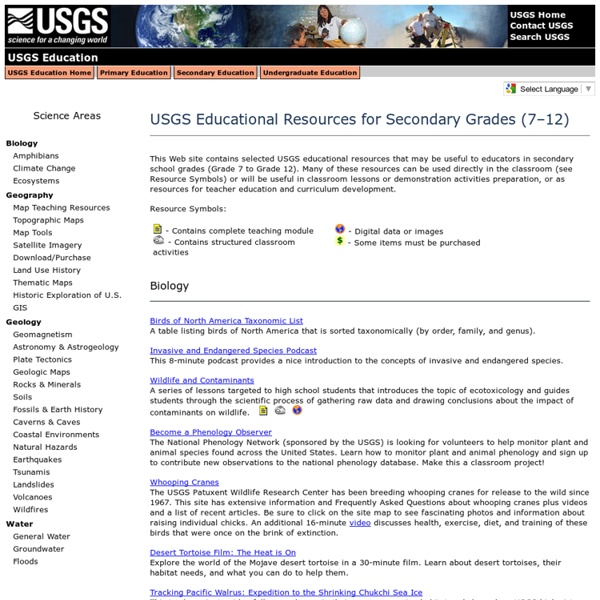USGS Education

Science Daily
Common Core English/Language Arts Standards | Science & Technical Subjects | Grade 9-10
Key Ideas and Details: CCSS.ELA-Literacy.RST.9-10.1Cite specific textual evidence to support analysis of science and technical texts, attending to the precise details of explanations or descriptions. CCSS.ELA-Literacy.RST.9-10.2Determine the central ideas or conclusions of a text; trace the text's explanation or depiction of a complex process, phenomenon, or concept; provide an accurate summary of the text. CCSS.ELA-Literacy.RST.9-10.3Follow precisely a complex multistep procedure when carrying out experiments, taking measurements, or performing technical tasks, attending to special cases or exceptions defined in the text. Craft and Structure: CCSS.ELA-Literacy.RST.9-10.4Determine the meaning of symbols, key terms, and other domain-specific words and phrases as they are used in a specific scientific or technical context relevant to grades 9-10 texts and topics. Integration of Knowledge and Ideas: Range of Reading and Level of Text Complexity:
Related:
Related:




The US Geologic Survey's Education website is another great resource for finding inquiry-based lessons. It includes lesson plans, modules, and other resources on topics related to biology, geography, geology, and water. The resources on this site do a great job of making sometimes dry topics interesting! by kalebclyatt Apr 23